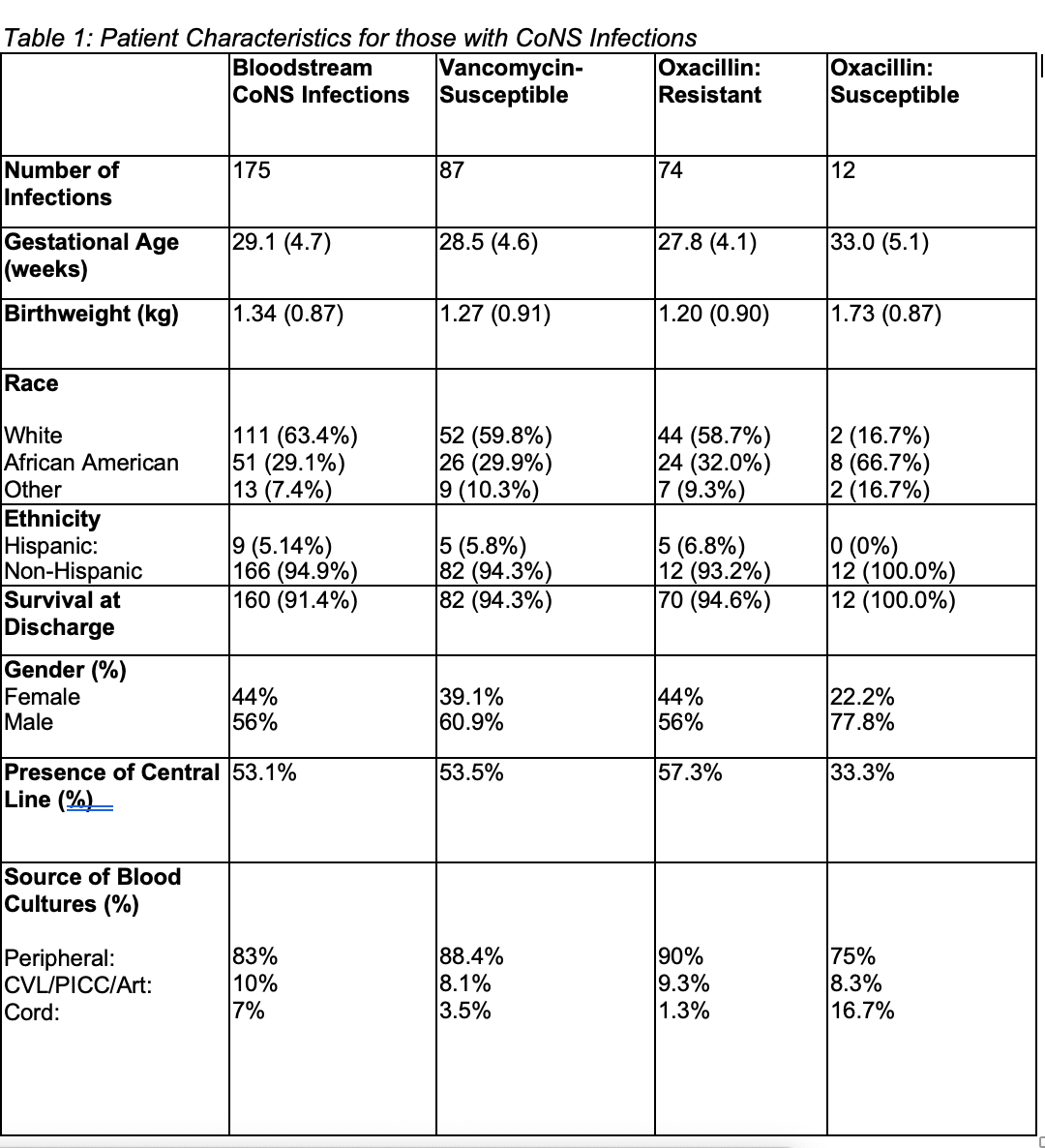Neonatal Infectious Diseases/Immunology
Neonatal Infectious Diseases/Immunology 6
458 - An analysis of risk factors affecting Coagulase-negative staphylococcus (CoNS) Infection Susceptibility Patterns
Monday, May 1, 2023
9:30 AM - 11:30 AM ET
Poster Number: 458
Publication Number: 458.432
Publication Number: 458.432
Leya Salis, University of Virginia School of Medicine, Charlottesville, VA, United States; David Kaufman, University of Virginia School of Medicine, Charlottesville, VA, United States; Nicole Palazzolo, UVA Childrens, Crozet, VA, United States

Leya Salis, BS, CPT (she/her/hers)
Graduate Student
University of Virginia School of Medicine
Charlottesville, Virginia, United States
Presenting Author(s)
Background: Coagulase-negative staphylococcus (CoNS) bloodstream infection (BSI) remains the most common infection treated in the NICU. There are few studies of CoNS species susceptibilities, and most have demonstrated that ~15% are susceptible to oxacillin/methicillin, providing an opportunity to treat with nafcillin or oxacillin in those cases. We hypothesized that the presence of a central line or other patient factors may be associated with infections caused by antibiotic resistance organisms.
Objective: To examine the current susceptibility patterns of CoNS species and risk factors associated with infections due to antibiotic resistance organisms.
Design/Methods: In August 2020, our microbiology laboratory initiated speciation and susceptibility testing for all CoNS BSIs from the NICU. Nucleic acid detection was used to rapidly speciate CoNS organisms and more quickly obtain susceptibility results for the clinical team. If CoNS species were susceptible to oxacillin, the patient was treated with nafcillin instead of vancomycin for the remainder of antimicrobial therapy. Isolates were analyzed for changes in susceptibility over time as well as any differences due to patient factors including gestational age (GA), birthweight, (BW) the presence of a central venous catheter (CVC) and other patient characteristics listed at the time blood cultures were obtained.
Results: CoNS susceptibilities were obtained from 87 CoNS BSIs nearly five-year time period from 1/1/2018 to 9/1/2022. Patient characteristics related to vancomycin and oxacillin susceptibilities are summarized in Table 1. Figure 1 shows the change in susceptibility to oxacillin and other antibiotics over time. Oxacillin-susceptibility was 14% and 19% during the last 12-month period examined. Univariate analysis demonstrated an association of lower GA with being infected with an oxacillin-resistant isolate (P=0.0002) and trends for being infected with an oxacillin-resistant isolate with gender, race, and presence of a central venous catheter at the time blood culture was sent.
Conclusion(s): CoNS susceptibilities patterns demonstrated an association of acquiring a BSI with an oxacillin-resistant isolate with lower GA. Our study was limited in analysis due to our small study sample size. Future research studying the effects of GA, gender, race and presence of a CVC may lead to further insight into factors influencing infection with resistant bacteria and antibiotic selection.
.png)

